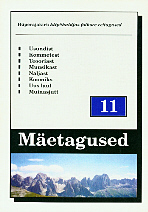Soomlase elu kujutamine pärimuslikus ajaloos
Telling Family Histories in Finland: Interpreting and Imagening the Past
Author(s): Pauliina Latvala-HarvilahtiSubject(s): Customs / Folklore
Published by: Eesti Kirjandusmuuseum
Summary/Abstract: In this article, I have addressed primarily the production processes underlying family history, its relationship to time and the ways in which finnish people has categorized the past and everyday life. My corpus of source materials, which is in written form, was collected 1997 through a collection competition called «the Great Family History», organized by the Finnish Literature Society Folklore Archives in Helsinki. The purpose of the collection contest was to gather information concerning social processes of change as seen through the experiences of family and kin group as well as to identify what it means to be aware of one's own family history. Family histories play an important role in creating a picture of recent history. With the year 2000 nearly upon us, the 20th century naturally becomes part of our recent history: narratives are told concerning this century, its events are well-known. Research material contains information received from parents and grandparents which often goes back as far as the 19th century, even though the narration focuses on the nineteen hundreds. The main themes in family history concerning this century in Finland are: mass emigration to America that took place at the beginning of this century, the wars (1918, 1939-1945) and the post-war construction of welfare-state. There is also a great deal of interest in the 19th, 18th and even earlier centuries. A partly fictional reconstruction of everyday life is made with the aid of family history research and can reach back as far as the 16th century. Persons who produce family histories are most likely aware of the categories of official and unofficial history, each of which contains certain models and rules for narration. Unofficial history is considered to be oral history, and the transfer of oral memoirs to paper in writing is seen to be an interpretation which complements official history. For example emotions and personal experiences belong to the unofficial history. The significance of family history is thus that it ensures that the past is transmitted to future generations from a perspective important to the self. Each historical period produces and brings forth styles of speech and cultural models through which historical narrative is processed. When Finns write about their pasts or their own lives, the model used is often one of a survival tale, which begins with what could be interpreted as complaints of poverty and toiling from dawn to dusk. One noteworthy features is however, the fact that the narrative does not end here: Finns tell of wretchedness and want and transform it into a source of pride by explaining how their families survived harsh conditions through their rugged resilience and refusal to give up.
Journal: Mäetagused. Hüperajakiri
- Issue Year: 1999
- Issue No: 11
- Page Range: 72-87
- Page Count: 16
- Language: Estonian

